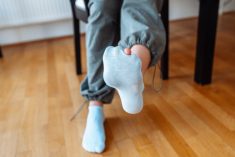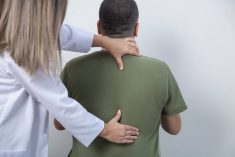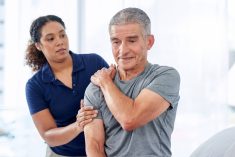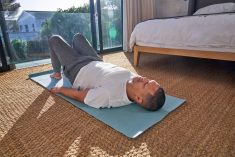Osteoarthritis, or OA, is a common diagnosis for degenerative changes in our joints, especially into the knees and hips. Arthritis of this kind is often found in people over the age of 30 regardless of genetics, lifestyle choices or medical histories and in most cases I consider it a “normal” part of an aging body.
While OA often does come with accompanying pain and changes in a joint’s range of motion, the pain usually associated with OA itself is more often than not related to the changes in our movement, protective mechanisms in our nervous system or levels of stress in our system. Many people have OA (even to a severe level) and don’t experience pain at all, and many people with very minor OA can have severe pain. Research has shown pain severity and objective joint degeneration levels do not necessarily go hand in hand.
Treating OA can be a combination of manual therapies and movement-based therapies. In severe cases, bracing or joint replacement surgeries are warranted.
Read Also

Seasoning for Korea’s culinary wave
Not unlike K-pop, Korean cuisine has become part of the international cultural tidal wave called Hallyu, Saskatchewan chef and writer dee Hobsbawn-Smith says.
In the clinic, I work with many clients who have either officially been diagnosed with OA or are experiencing symptoms potentially related to OA. Sometimes these clients are waiting for a joint replacement surgery, and sometimes our goals are to maintain the highest level of movement quality and painless function possible using more conservative techniques for as long as possible.
Regardless of the area affected by OA, movement is one of the most important treatment and maintenance techniques available to us. My first recommendation and the priority of care for any client with OA will be to find ways to keep moving. The principle of “use it or lose it” often applies!
For OA in the knees, sometimes a valuable tool is to work with a knowledgeable brace fitter to find a support that helps take some of the pressure off of the affected joint. “Unloader” braces for knee OA have a high success rate and, most importantly, often allow patients to keep moving on the joint with minimized symptoms. Hips can be a bit trickier as they are a joint that manages a lot of force and movement; however, informed mobility practices guided by a movement-focused professional is often an important support for maintaining movement and preventing worsening symptoms.
What I want all of my OA clients to know is pain is sometimes part of the journey, but not a fated outcome. Utilizing other pain mediation techniques like breathwork practices, stress management practices and hands-on modalities, especially when they support the maintenance of movement that is enjoyable for the client, are also great additions to an OA-based program. Doing all of these things leading up to a planned joint replacement surgery can also benefit optimal outcomes post-surgery.
If you believe you might have degenerative changes related to OA, or have been diagnosed with OA, my first piece of advice, and probably the most important piece of advice, would be to seek out professional support from an athletic therapist, a movement-based therapist (like a kinesiologist) or a physiotherapist, with movement as a part of their practice to begin programming what is best suited to you.















